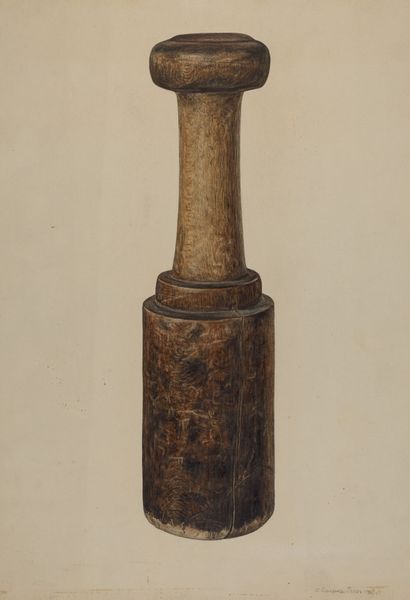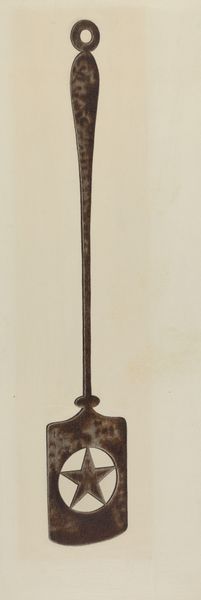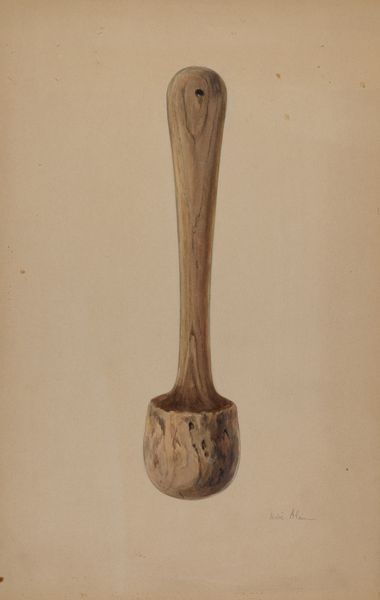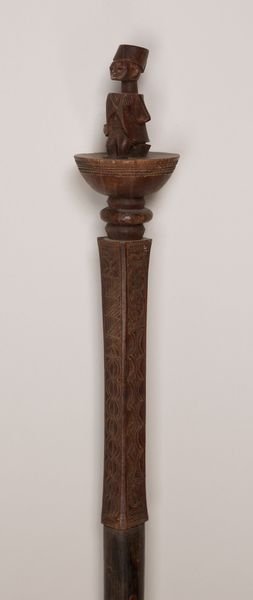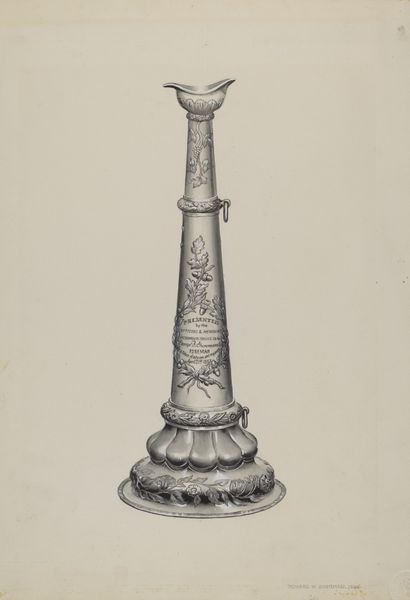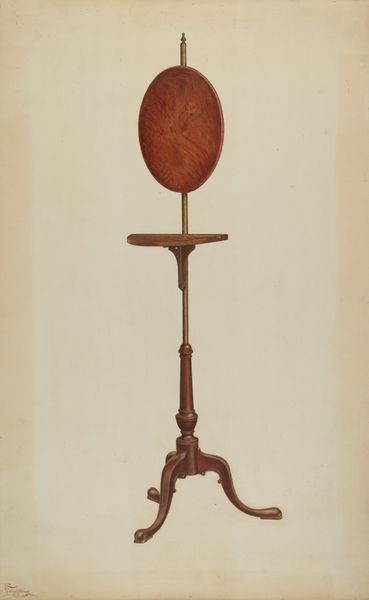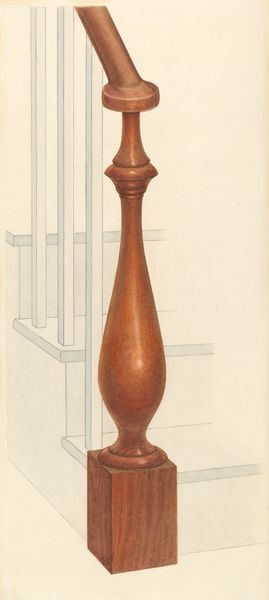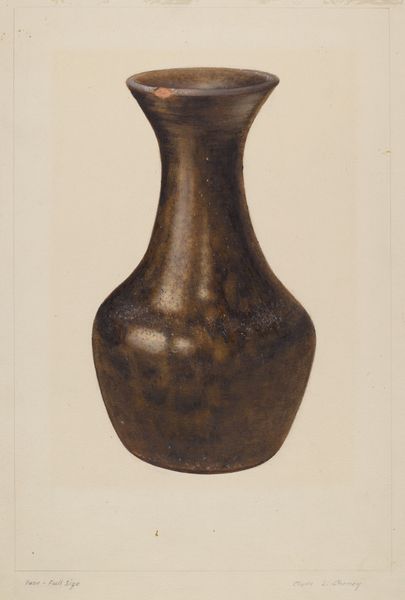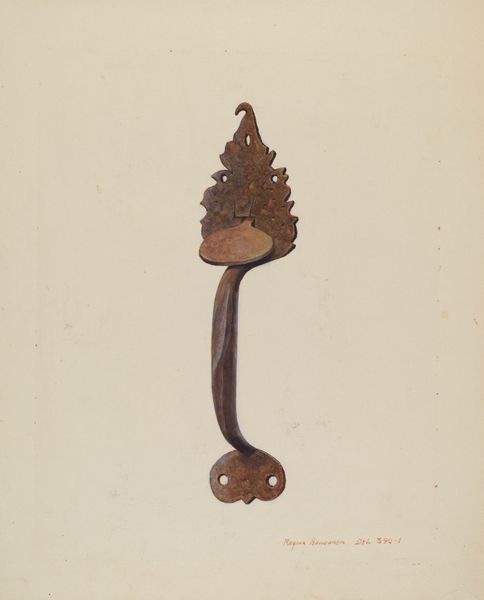
drawing, watercolor
#
drawing
#
water colours
#
watercolor
#
academic-art
#
watercolor
#
realism
Dimensions: overall: 45.5 x 25.4 cm (17 15/16 x 10 in.) Original IAD Object: 3 5/16" in diameter; 13 11/16" long
Copyright: National Gallery of Art: CC0 1.0
Editor: Here we have Simon Clever’s "Masher," created around 1941, rendered in watercolor. It's a surprisingly elegant depiction of such a utilitarian object. What stands out to you in terms of its meaning, especially considering its context? Curator: This seemingly straightforward image of a masher raises compelling questions about the value we assign to labor and the objects used in its execution. The precise, almost clinical, rendering elevates this everyday tool to the level of high art, disrupting the traditional hierarchy that often devalues craft and manual work. Considering its production during wartime, the image takes on even more significance, reminding us of the tangible, often overlooked, labor involved in sustaining society. Editor: I see your point about elevating the mundane. Does the choice of watercolor, a medium often associated with delicate landscapes or portraits, contribute to that elevation, or perhaps comment on the nature of domestic work itself? Curator: Precisely! The fragility and subtle washes of watercolor contrast sharply with the masher's intended purpose – crushing and grinding. This disjunction forces us to confront the romanticized versus the lived reality of labor, particularly domestic work. It challenges us to examine the unseen hours and energy that go into the material production that supports us. What does this masher mash, and who is using it? These considerations, while outside of the art object, give it greater context. Editor: That's fascinating. I never considered the choice of medium in that light before. Curator: Considering how the artwork was created and how the materials reflect society adds an extra layer of complexity that moves beyond purely aesthetic readings. We see how deeply intertwined are the means of production, social value and our consumption, when looking through a material lens. Editor: I've certainly gained a new appreciation for how much meaning can be embedded in even the simplest still life. Thanks! Curator: My pleasure!
Comments
No comments
Be the first to comment and join the conversation on the ultimate creative platform.

